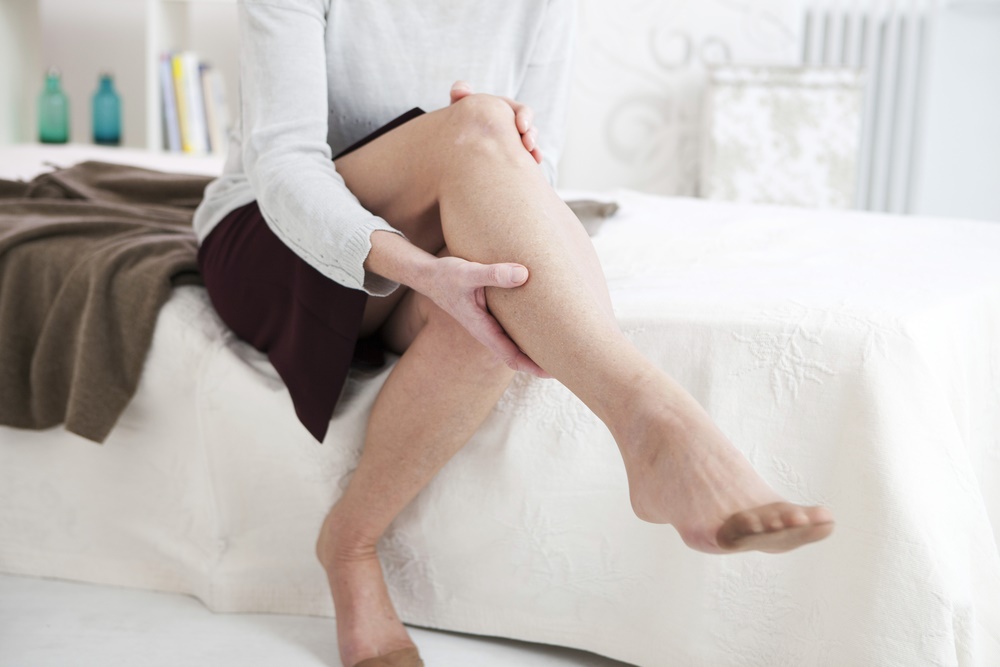Symptoms of vein inflammation may be:
- Redness of the skin along the vein
- Warmth of the skin and tissue around the vein
- Tenderness
- Stabbing pain
- Limb pain
- Darker skin over vein
- Vein becomes harder
- Varicose vein
It’s important to go to the doctor if the above symptoms occur, worsen, or new symptoms appear, e.g. fever and chills. This could mean the affected person has a more serious illness or condition.
Causes and origin of vein inflammation
Vein inflammation is often caused by a damage of the venous wall, e.g.:
- During blood withdrawal
- During insertion of a catheter
- From infusion solutions
- From a blow
- From an insect bite
- Risk factors for vein inflammation:
- Overweight
- Nicotine
- Alcohol
- Medications, such as birth control pills (regular check-ups are needed)
In varicose veins on the legs, the blood flows more slowly than usual. This favors the development of thrombosis and inflammation. Phlebitis can also occur in certain connective tissue diseases or malignant tumors. Less common forms are Thrombophlebitis migrans, which slowly spreads along veins, Thrombophlebitis saltans, or Thrombangiitis obliterans.
Consequences of vein inflammation
Vein inflammation is a short-term condition with no complications, in general. However, there might be a few possible problems, such as skin infection called cellulitis. Cellulitis is caused by bacteria and treated with antibiotics in most cases. Another possible complication is deep vein thrombosis. This condition can be life-threatening if the clot breaks apart and travels to your lungs. It requires immediate treatment with blood thinners.
But normally, a full recovery is expected in one to two weeks. Hardening of the vein may take a little longer to heal. Recovery may also take longer if an infection is involved. Superficial thrombophlebitis may recur if the affected person has varicose veins.
Medical Treatment
Self-care steps for superficial vein inflammation
- Apply heat to the painful area
- Elevate the affected leg
- Use a nonsteroidal anti-inflammatory drug
The condition usually improves significantly within a month.
Treatments for thrombophlebitis, including deep vein thrombosis:
- Blood-thinning medications
- Clot-dissolving medications
- Compression stockings: They help prevent recurrent swelling and reduce the chances of complications of deep vein thrombosis. Some patients have to wear them for two years or more.
- Filter: If the patient can't take blood thinners, a filter might be inserted into the main vein in his/her abdomen to prevent clots that break loose in leg veins from lodging in the lungs. The filter is normally removed when it's no longer needed.
- Varicose vein stripping: In this procedure, the doctor removes varicose veins that cause pain or recurrent thrombophlebitis. The surgery might also be done for cosmetic reasons. After vein stripping, the patient often has to wear compression stockings.
Preventive measures
Inactivity increases the risk of thrombophlebitis as well as sitting during a long flight or car ride which may results in swollen ankles and calves.
To help prevent blood clot:
Take a walk: Walk around in the airplane cabin at least once an hour. If you're driving, take a break every hour and go for a little walk.
Move your legs on a regular basis, if you have to stay seated for a long time: Flex your ankles, or press your feet against the floor or footrest in front of you (carefully) – at least ten times each hour.
Take additional precautions on flights or car rides that last more than four hours. In this way you can reduce your risk of deep vein thrombosis:
- Don’t wear tight clothes
- Drink lots of nonalcoholic fluids to avoid dehydration
- Stretch your calves by walking at least once an hour
- Wear compression stockings if there is an increased risk of deep vein thrombosis
- Take prescribed blood-thinning medication after having spoken to the doctor
Good prophylaxis against vein inflammation:
- Lots of physical activity (especially in summer)
- No overweight
- No extreme overweight
- No (or limited use of) alcohol or nicotine
- Sufficient liquid
- Blood anti-coagulant Heparin after surgery and for patients with a high risk of developing thrombosis

